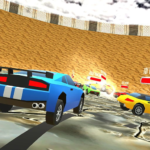Gothic 1 Remake – An Expert Guide to the Reborn RPG Classic
Gothic 1 Remake revives the legendary 2001 RPG with modern polish and deep reverence. Released in late 2025 by THQ Nordic and Alkimia Interactive, this comprehensive overhaul preserves the cult classic’s gritty atmosphere while overhauling visuals, combat mechanics, audio, and usability. This expert guide covers ten essential aspects—from development origins to community response—complete with nuanced pros, cons, and an overall rating to guide both veteran players and newcomers.
1. Origins & Gothic 1 Remake Development Journey
The remake began quietly in early 2023 under THQ Nordic’s flagship Remake Initiative, with Prague-based Alkimia Interactive entrusted with the project. After closed-alpha tests later that year to refine core systems, a public beta in mid-2024 enabled player feedback on UI, quest flow, and combat. The full release in November 2025 reflects this iterative, community-driven approach.
This phased development ensured balance between nostalgia and modernization. Developers retained the original narrative structure and core world design while improving responsiveness and visuals, showing clear respect for fan preferences.
2. World Redesign & Gothic 1 Remake Environment
The remake’s environments—including the Valley of Mines, Old Camp, New Camp, and Orc Cave—have been fully rebuilt using Unreal Engine 5. Dynamic lighting, volumetric fog, and richly detailed foliage enhance immersion. Architectural elements, such as guard towers and mine shafts, now show realistic weathering and age.
Exploration is rewarded more than ever. The enhanced environmental storytelling—rusted tools in a dead-end tunnel, faded graffiti, hidden chests—adds depth. These changes retain the original world’s layout but enrich it with ambiance and polish.
3. Quest Structure & Gothic 1 Remake Story Mechanics
Quests remain true to the original branching storyline of faction alignment—Old Camp, New Camp, or Brotherhood. However, quest delivery has been polished. The journal now tracks objectives clearly, and optional waypoints guide without spoiling discovery or losing immersion.
Side quests have been streamlined, removing ambiguous or buggy triggers and improving pacing. Dialogue is richer and shorter, with optional lines that deepen lore rather than drag. The result is classic Gothic storytelling delivered with modern sensibility.
4. Character Progression & Gothic 1 Remake Skill Systems
Character growth now supports hybrid builds. While sticking with fighter/ranger/mage archetypes, the remake includes perks that allow cross-archetype builds: warriors can learn basic healing magic, and rangers may invest in light melee or potion crafting.
XP gain is smoothed to reduce early grind and encourage exploration. Late-game milestones now grant meaningful perks like enhanced lockpicking or specialized potion mastery. The progression feels more flexible and satisfying.
5. Combat Overhaul & Gothic 1 Remake Mechanics
Combat receives its most significant upgrade. The original’s clunky targeting is replaced with responsive melee featuring dodge rolls, parrys, light/heavy combos, and stagger states. Enemies react more naturally—retreat, flank, or call for backup.
Boss fights like Gorn or Orc Leader now involve strategy and timing rather than brute force. The fighting feels deliberate, balanced, and engaging, making combat a genuine thrill rather than a chore.
6. Audio & Gothic 1 Remake Sound Redesign
Sound design has been fully reimagined. Ambient effects—mine drips, campfire crackles, distant wolves—aren’t just background filler but narrative-building tools. Orchestral themes remain familiar yet richer, building tension dynamically.
Voice acting is extensive: miners speak with weariness, guards with suspicion, faction leaders with conviction. Their delivery adds emotional nuance and world believability that text alone could never achieve.
7. Visual Artistry & Gothic 1 Remake Character & Spell Effects
Character and monster models display detail with scars, dirt, and material realism. Spells—fire, ice, earth—are brightly animated and impactful while remaining faithful to Gothic lore.
NPC facial expressions and animations improve emotional resonance during dialogues. UI design blends medieval motifs with clear icons and text, preserving tone and improving readability.
8. Quality-of-Life and Gothic 1 Remake Usability
Fast travel unlocks between major locations after key progress. Inventory is sortable with filters, tooltips, and drag-and-drop. Auto-save worlds with manual slots foster risk-taking.
Optional minimap, tooltips, and quest markers aid accessibility for new players, while purists can disable them to preserve challenge. These usability upgrades reduce grind but keep depth intact.
9. Community Reception & Gothic 1 Remake Feedback
Reception has been enthusiastic. Fans praise combat, visuals, and polish. Let’s Play engagement has skyrocketed, with many calling it a respectful revival.
Criticism centers on minor quest flow changes and some voice direction choices. Minor bugs were patched quickly thanks to developer responsiveness. Overall, community sentiment remains overwhelmingly positive.
Conclusion
Gothic 1 Remake redefines the classic RPG revival. It offers powerful, responsive combat, immersive world-building, strong audio-visual design, and quality-of-life systems that respect player experience. Minor flaws—pruned quests, voice acting inconsistencies—do nothing to diminish its achievement.
Scoring a strong 9 out of 10, this remake succeeds as both a nostalgic rediscovery and compelling fantasy adventure. Gothic’s world is reborn—rich, dangerous, and fully alive—welcoming both longtime fans and new adventurers back into its shadowed corridors and moral choices.































